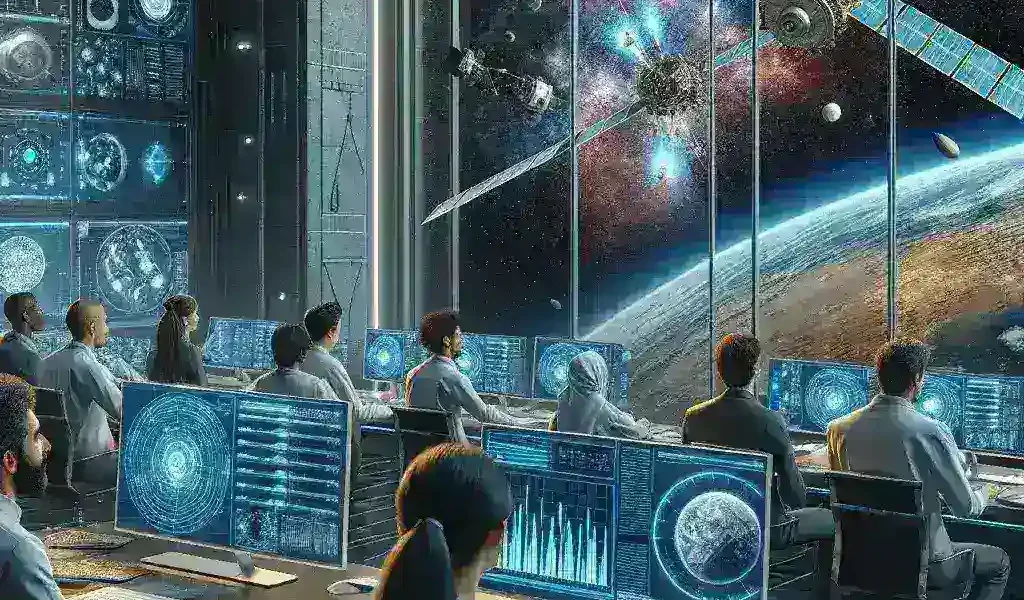NASA Partners with SpaceX to Test Satellite Collision Avoidance Using Autonomous AI
Introduction
In an age where the cosmos is becoming increasingly crowded with satellites, the collaboration between NASA and SpaceX marks a pivotal moment in space exploration and safety. This partnership aims to utilize autonomous artificial intelligence (AI) for satellite collision avoidance, an endeavor that not only addresses immediate concerns but also sets the stage for a more secure space environment.
Understanding Satellite Collision Risks
The rising number of satellites in low Earth orbit (LEO) has escalated the risk of collisions. According to NASA, there are currently over 3,000 operational satellites, with thousands more planned to launch in the coming years. The potential for collisions poses significant risks not only to these satellites but also to the International Space Station (ISS) and future space missions.
The Need for Collision Avoidance
Space debris, including defunct satellites and discarded rocket stages, presents a grave concern for operational satellites. A collision can lead to catastrophic failures, resulting in costly losses and endangering human lives aboard the ISS. Therefore, developing an effective collision avoidance system is crucial.
NASA and SpaceX: A Strategic Partnership
The partnership between NASA and SpaceX is built on a shared vision for advancing space technology. This collaboration focuses on deploying autonomous AI systems capable of predicting potential collisions and executing avoidance maneuvers without human intervention.
Autonomous AI: How It Works
At the core of this initiative is an advanced AI algorithm designed to analyze vast amounts of data from various sources, including tracking databases and sensor feeds. Key components of the algorithm include:
- Data Collection: The AI gathers real-time data on the positions and trajectories of satellites and debris.
- Predictive Modeling: Using predictive analytics, the AI forecasts potential collision scenarios.
- Decision-Making: The system autonomously decides whether to perform a maneuver to avoid a collision.
Historical Context of AI in Space Operations
AI has been a gradual evolution in the field of space exploration. From initial uses in navigation systems to more complex applications in data analysis, AI’s role has continuously expanded. The integration of AI into satellite operations represents a significant step forward, transforming how we ensure the safety of our space assets.
Past Collaborations and Developments
NASA has previously tapped into AI for various missions, including the Mars Rover program, enabling autonomous navigation on the Martian surface. SpaceX, known for its innovative approaches, has pioneered reusable rocket technology and automated launch systems.
Future Predictions: The Road Ahead
Looking ahead, the collaboration between NASA and SpaceX could redefine space safety protocols. The success of autonomous collision avoidance systems may lead to:
- Increased Operational Efficiency: AI can significantly reduce the need for manual monitoring and intervention, allowing for streamlined satellite operations.
- Enhanced Safety Measures: With reliable AI systems, the risk of collisions may decrease, promoting a safer space environment.
- Broader Applications: The technology could be adapted for use in other areas of aerospace, including manned missions and planetary exploration.
Pros and Cons of Autonomous AI in Space
Advantages
- Real-Time Decision Making: Autonomous AI can react faster than human operators, executing necessary maneuvers in critical situations.
- Data-Driven Insights: AI systems can analyze vast datasets to derive insights that would be time-consuming for human analysts.
Challenges
- Technical Limitations: Developing reliable AI algorithms that can handle unpredictable scenarios remains a challenge.
- Ethical Considerations: The reliance on AI raises questions about accountability and decision-making in critical situations.
Expert Opinions and Predictions
Experts in the fields of aerospace and robotics have expressed optimism regarding the partnership’s potential. Dr. Jane Carter, an aerospace engineer at NASA, stated, “The integration of autonomous AI into our satellite operations could herald a new era of space safety. As we continue to explore the cosmos, ensuring the safety of our assets is paramount.”
Real-Life Examples and Applications
Several satellite operators have begun exploring AI-driven collision avoidance strategies, demonstrating the technology’s feasibility. For instance, OneWeb and Planet Labs are already utilizing AI to enhance their operational protocols, showcasing the practical applications of this technology.
The Role of International Cooperation
While the partnership between NASA and SpaceX is significant, global cooperation is crucial in establishing standards for satellite operations and collision avoidance systems. Collaborative efforts among space-faring nations can lead to more effective solutions and a unified approach to mitigating space debris risks.
Conclusion
The partnership between NASA and SpaceX to test satellite collision avoidance using autonomous AI represents a groundbreaking step in the realm of space safety. As the cosmos becomes more congested, the integration of advanced technologies will be essential in ensuring secure and sustainable space operations. The future of space exploration hinges on our ability to adapt and innovate, and this collaboration exemplifies the potential of human ingenuity in the face of emerging challenges.

